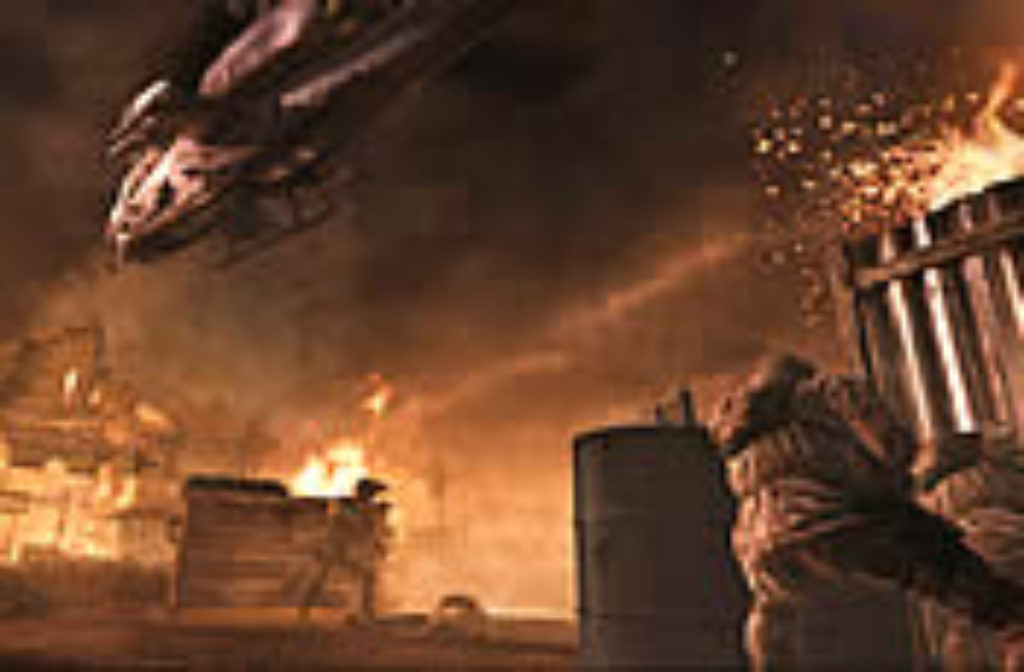
There are a lot of first-person shooter video games out there. And in a lot of them all you do is pick up a digital gun and pop ’til you drop. But there are few with the reputation of Call of Duty. The franchise was introduced in 2003, and these well-made games have consistently landed on top of the critical-praise and award-winning heap ever since.
Here’s a bit of trivia for you: Remember all the media fervor that the sci-fi shooter Halo 3 caused last year? You may be surprised to know that that much-referenced game was not the biggest seller of 2007. Call of Duty 4: Modern Warfare was. In fact, even though this title wasn’t released until November, it still ended up being numero uno. Add a few months onto the back side of your calculations, and by June 2008 you’re looking at a phenomenon that had sold a reported 10 million copies and claimed a spot among the Top 10 best-selling video games of all time.
My call of duty, then? Dig into what makes a war game stand out during basic training.
The Definition of War
It’s not that Call of Duty reinvents the genre. Rather, all the things that people point to in a top-notch game—immersive realism, blood pressure-raising intensity and challenging missions—are all done really well here.
As the title suggests, this latest Call of Duty jumps ahead 60 years from the World War II focus of its first three installments to a fictional but totally plausible conflict in the modern-day Middle East. Russian ultranationalist rebels are determined to return their homeland to the days of Soviet control. So they finance a coup d’etat in a Middle Eastern oil-producing nation in hopes of steering international attention to the Arab conflicts while they grab a nuclear weapons stockpile. But the U.S. finds out about the plot and joins forces with the Brits and Russians to thwart it.
Players alternate between donning the night goggles of “Soap” MacTavish, a freshly recruited British SAS operative, and hitting the ground in the boots of U.S. Marine Sergeant Paul Jackson. Switching back and forth between the two personas breaks up an abundant onslaught of intense firefights with a little nerve-cooling sneaky stuff. Oh, and gamers also play briefly as President Yasir Al-Fulani, the overthrown leader of that unnamed Middle Eastern country, as he’s dragged out and shot in the forehead on international television.
The Cost of War
But as surprising and totally creepy as that turn of events is, it’s the adrenaline overdose of action throughout the rest of the game that really sends players’ heads spinning. The gaming is fast-paced and driving. Whether sniping out hordes of enemies in Azerbaijan, manning a 120mm gun on a Marine chopper or taking cover from a ground-shaking assault of artillery shells, it’s obvious that this is far more than your average trigger-puller.
Then, it could be said that Call of Duty 4: Modern Warfare is far more than even its own T-rated predecessors. Not only has this M-rated title’s weaponry been upgraded to represent modern tech—everything from wall-penetrating carbines to Javelin portable anti-tank missiles—but the realistic gore has been pumped up, too. Vanquished enemies now paint the scenery with their bloody brains or writhe and bleed out on the ground when hit with a high-powered round.
Communication on the battlefield isn’t quite as realistic as real war—with foul language limited to infrequent uses of “d–n,” “s—,” “h—,” “a–” and the British profanity “bloody”—but that’s not saying much. (Or rather, it’s still saying too much.)
The Teaching of War
The crew at game developer Infinity Ward brought in retired Lt. Col. Hank Keirsey to consult on their digital battlefield experience and make sure they got it right. When asked about the game’s accuracy by online gaming magazine IGN, he replied, “Fortunately for me, my firefights have never been as intense as in the game. … This is probably one of those firefights that occur when you happen to be in that one sector of a very bad battle. Maybe only one out of every thousand soldiers has seen this kind of battle.”
Still, the lieutenant colonel felt that the game was worthwhile. “A lot of WWII veterans say, ‘I hate videogames, they shouldn’t be glorifying what we did,'” Keirsey said. “But when a kid plays this game, he sees what soldiers are going through right now. He gains an appreciation of what that one out of a thousand Americans that is now deployed in combat, in a rotten war, is having to experience. They don’t get to choose the war, they don’t get to choose the battlefield, they go where they’re told.”
I can certainly appreciate Lieutenant Colonel Keirsey’s sentiments. But, for all of Call of Duty 4‘s pizzazz and lesson-teaching potential, the question remains: Should players, especially young ones, be exposed to the rapid-fire blood and guts of a “rotten war” as an exercise in … entertainment? Is it healthy to experience the horrors of war and learn the techniques of death, even in digital form? I’d have to say I’m with the WWII vets on this one.

After spending more than two decades touring, directing, writing and producing for Christian theater and radio (most recently for Adventures in Odyssey, which he still contributes to), Bob joined the Plugged In staff to help us focus more heavily on video games. He is also one of our primary movie reviewers.